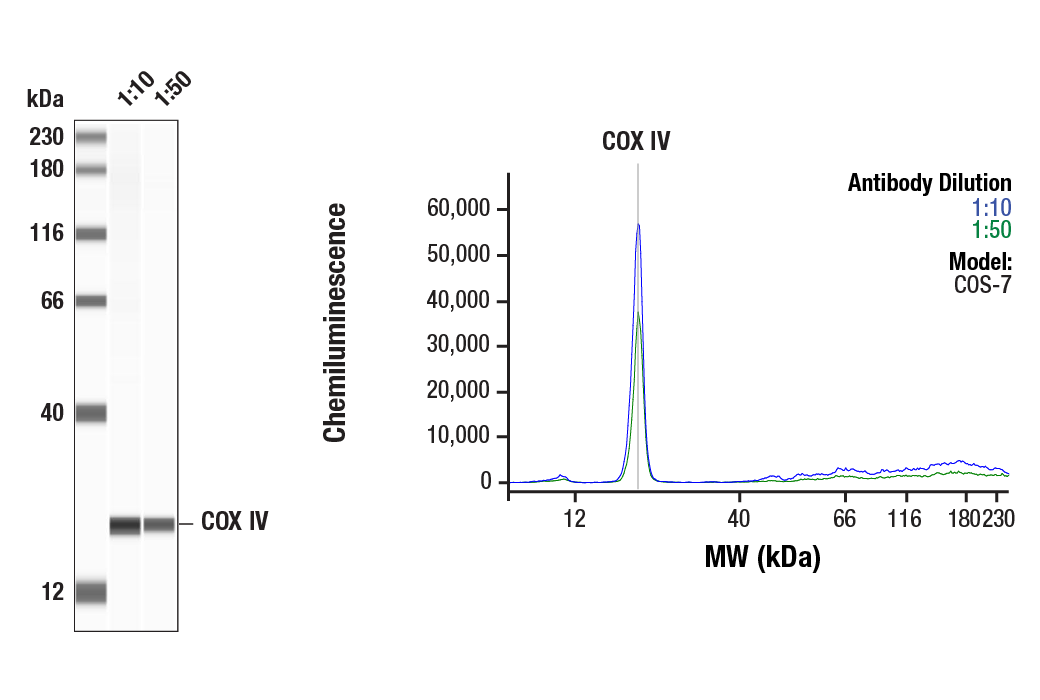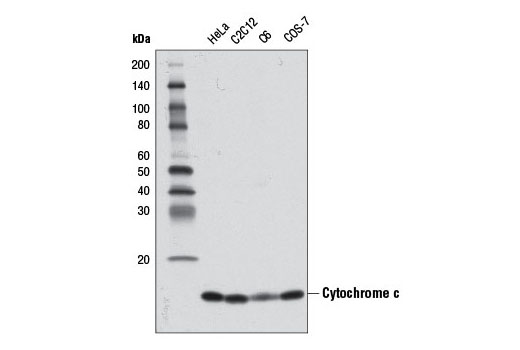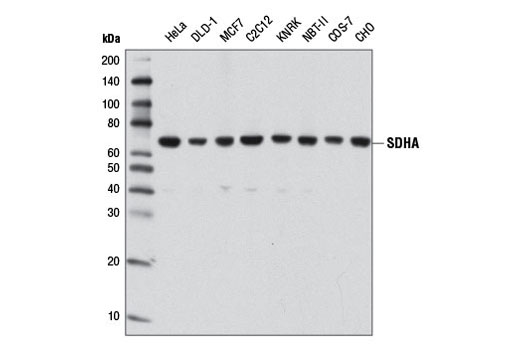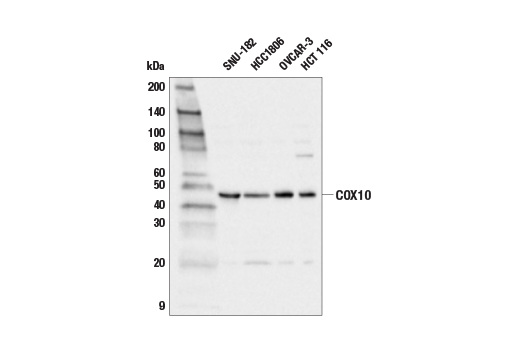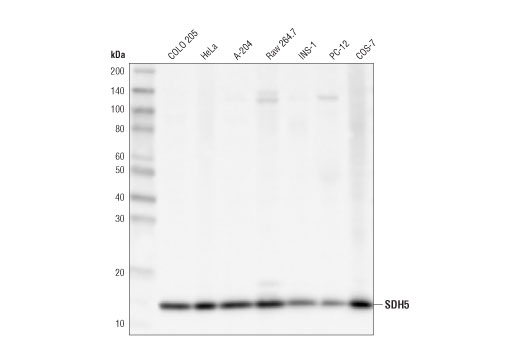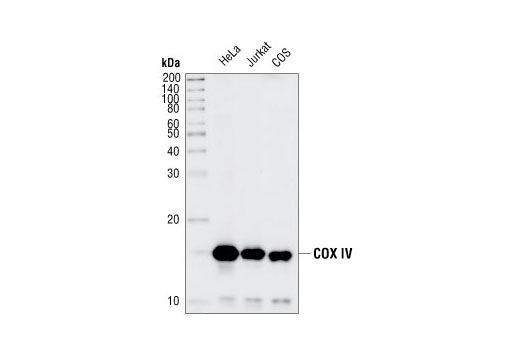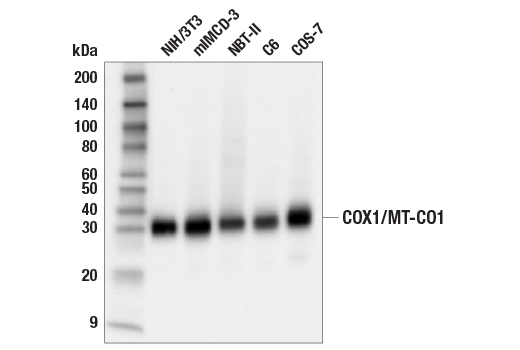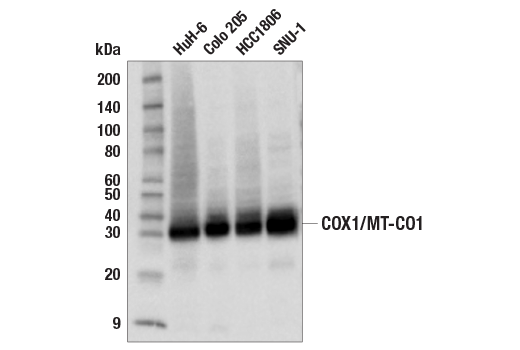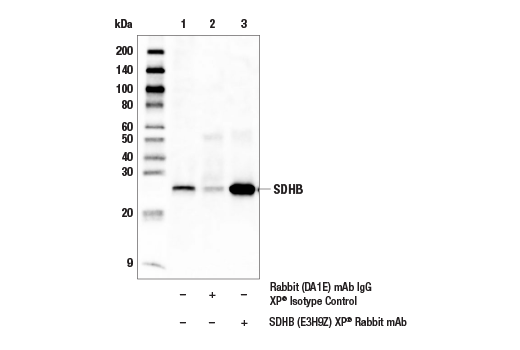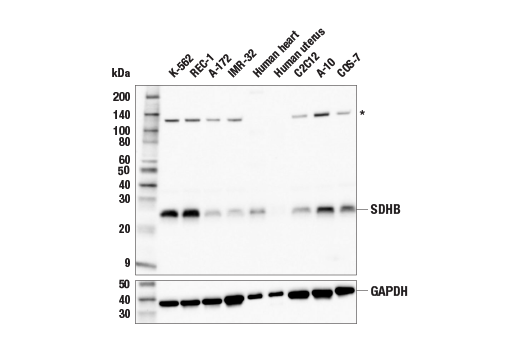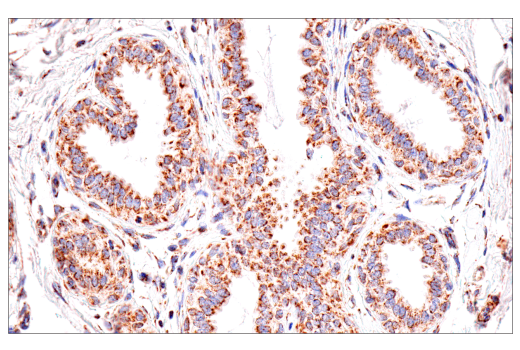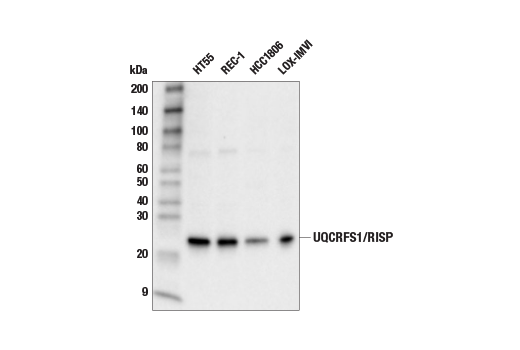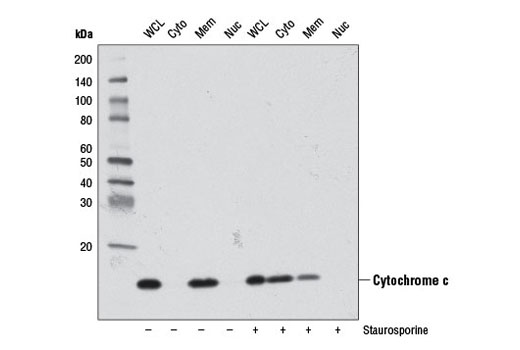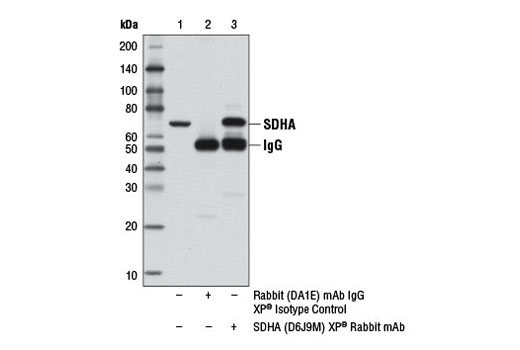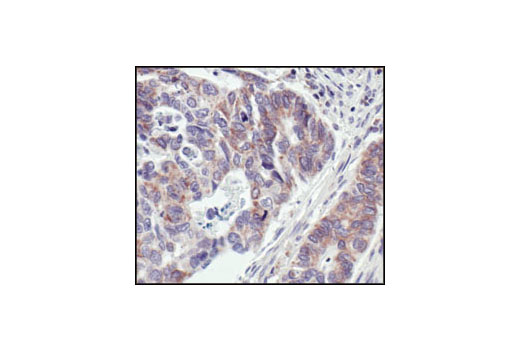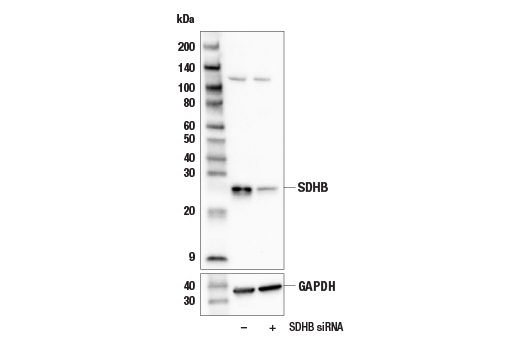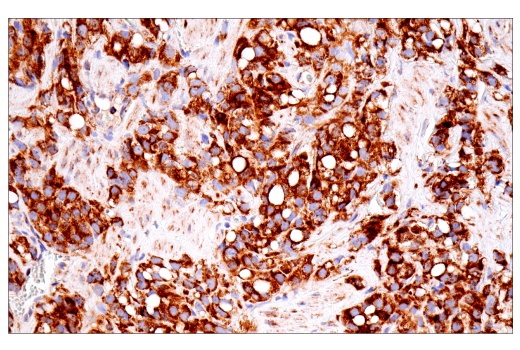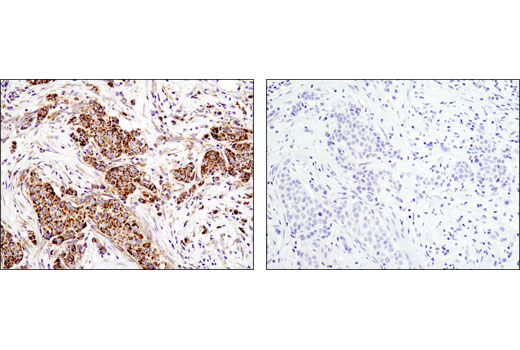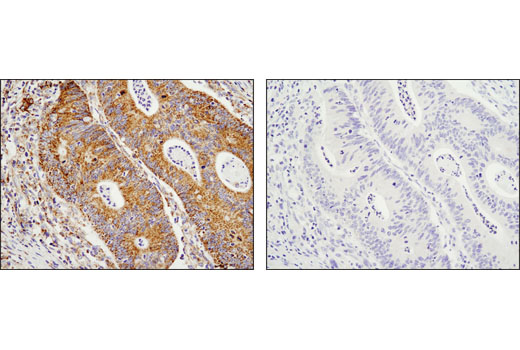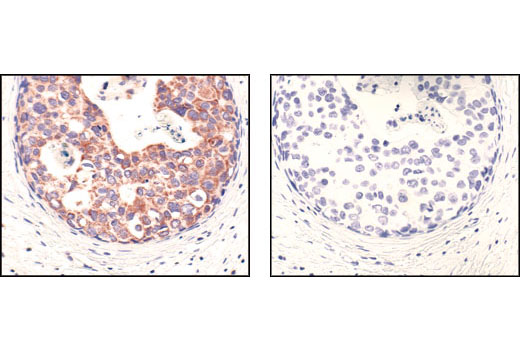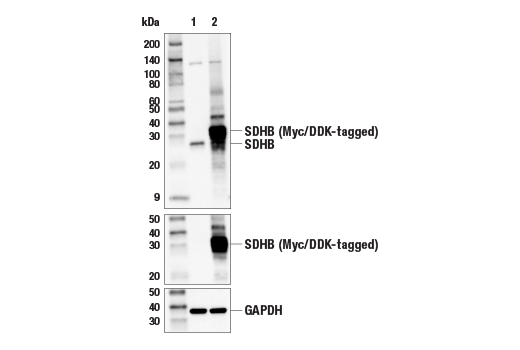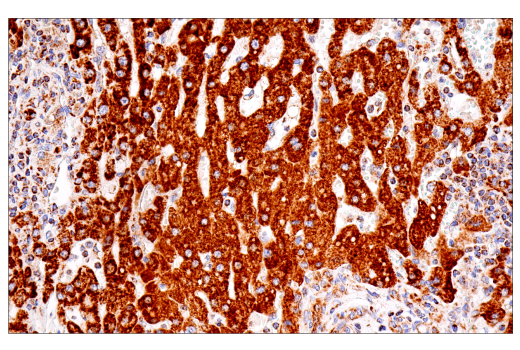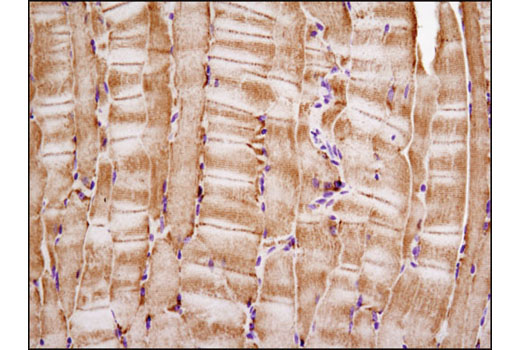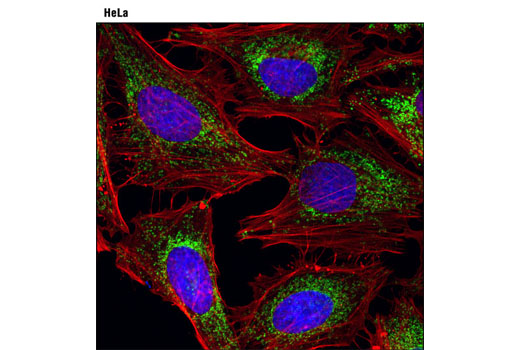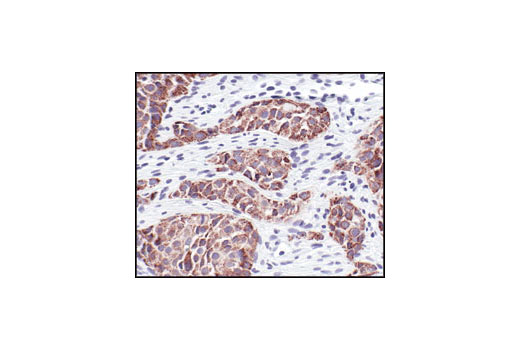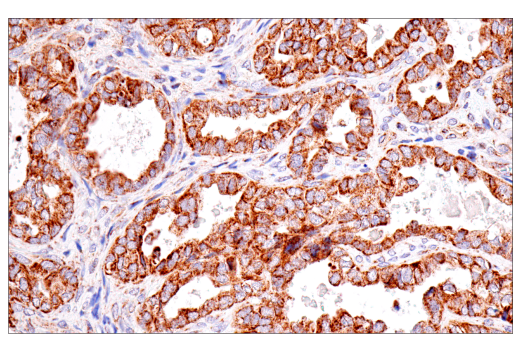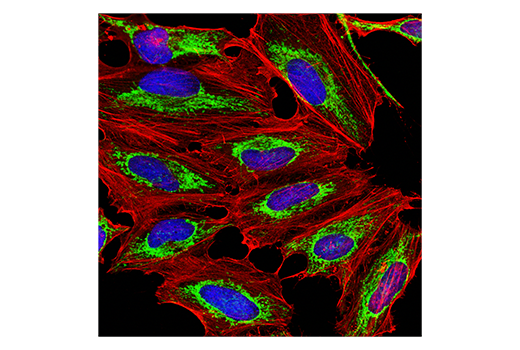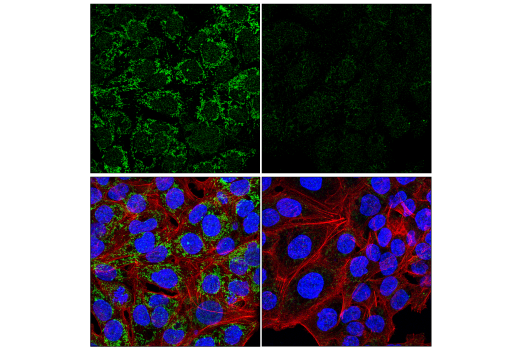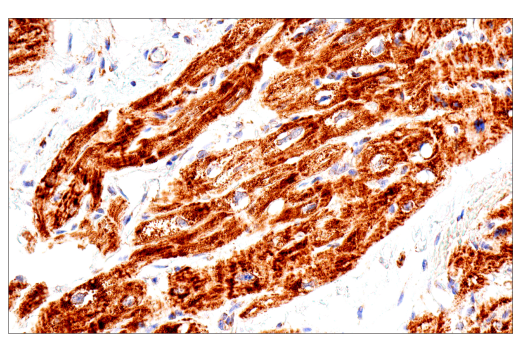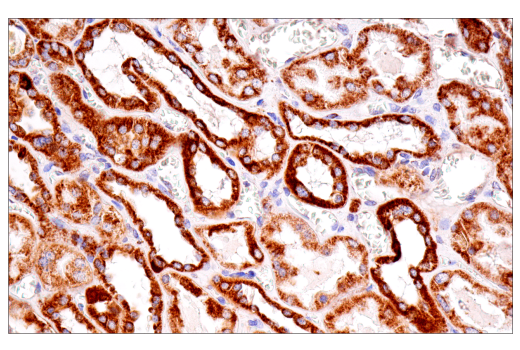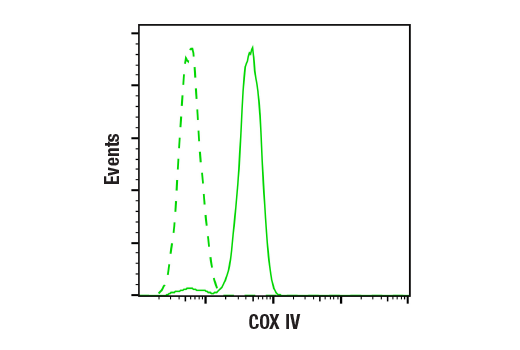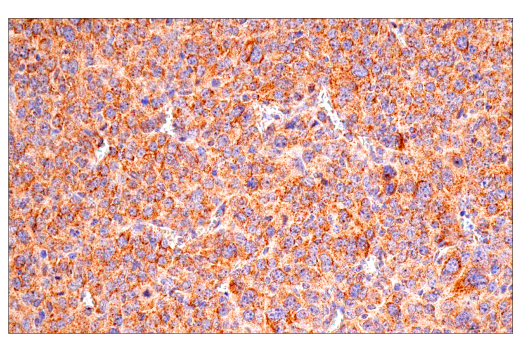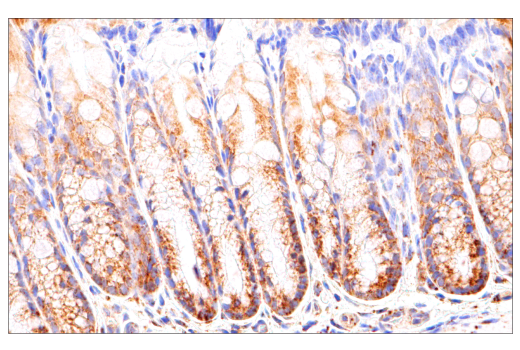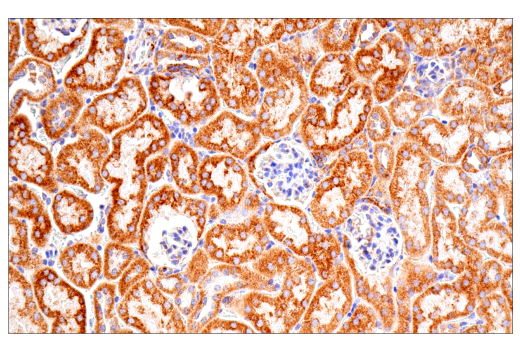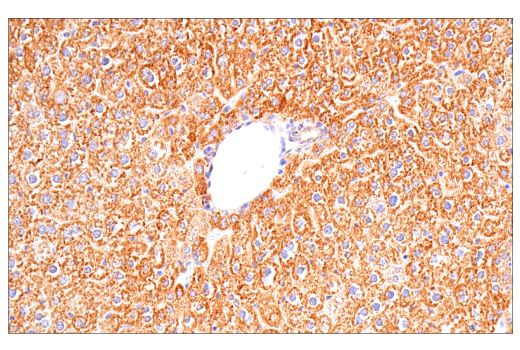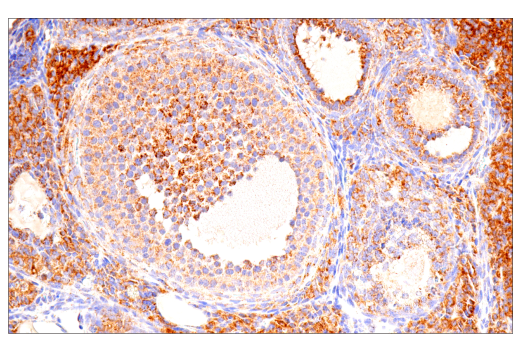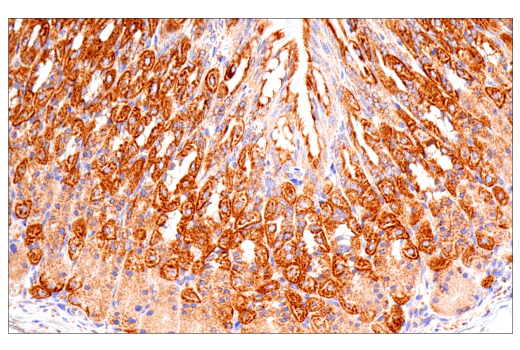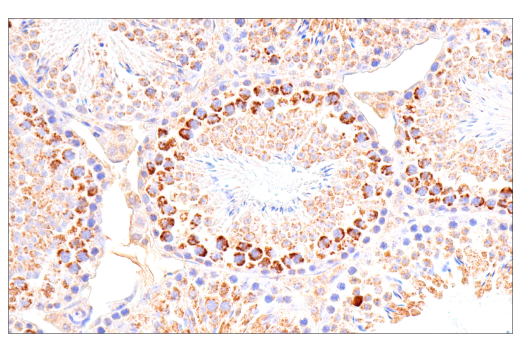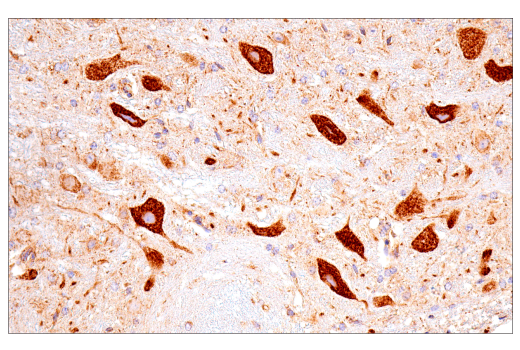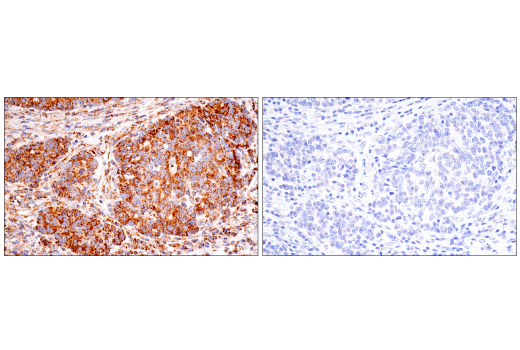| Product Includes | Product # | Quantity | Mol. Wt | Isotype/Source |
|---|---|---|---|---|
| SDHA (D6J9M) XP® Rabbit mAb | 11998 | 20 µl | 70 kDa | Rabbit IgG |
| SDHB (E3H9Z) XP® Rabbit mAb | 92649 | 20 µl | 26 kDa | Rabbit IgG |
| UQCRFS1/RISP Antibody | 95231 | 20 µl | 23 kDa | Rabbit |
| Cytochrome c (D18C7) Rabbit mAb | 11940 | 20 µl | 14 kDa | Rabbit IgG |
| COX1/MT-CO1 (E2I2R) Rabbit mAb | 55159 | 20 µl | 32 kDa | Rabbit IgG |
| COX IV (3E11) Rabbit mAb | 4850 | 20 µl | 17 kDa | Rabbit IgG |
| COX10 (E6K4D) Rabbit mAb | 24744 | 20 µl | 49 kDa | Rabbit IgG |
| SDH5 (D1S8D) Rabbit mAb | 45849 | 20 µl | 15 kDa | Rabbit IgG |
| Anti-rabbit IgG, HRP-linked Antibody | 7074 | 100 µl | Goat |
Please visit cellsignal.com for individual component applications, species cross-reactivity, dilutions, protocols, and additional product information.
Description
The Electron Transport Chain (Complex II, III, IV) Antibody Sampler Kit provides an economical means of detecting select components involved in the electron transport chain (ETC) (Complex II, III, IV). The kit includes enough antibodies to perform two western blot experiments with each primary antibody.
Storage
Background
Succinate dehydrogenase (SDH), also known as Complex II or succinate:quinone oxidoreductase, is a key component of the citric acid cycle and the electron transport chain (ETC) (1). Specifically, it is involved in the oxidation of succinate (2). SDH consists of four subunits: SDHA, SDHB, SDHC, and SDHD (3). Ubiquinol-cytochrome c reductase iron-sulfur subunit (UQCRFS1), also known as Rieske iron-sulfur protein (RISP), is a component of Complex III in the mitochondrial ETC. UQCRFS1/RISP and two other subunits, cytochrome b (MT-CYB) and cytochrome c1 (CYC1), are essential for the catalytic activity of Complex III (4). Cytochrome c is a well conserved electron transport protein and is part of the respiratory chain localized to mitochondrial intermembrane space (5). Upon apoptotic stimulation, cytochrome c released from mitochondria associates with procaspase-9 (47 kDa)/Apaf-1. This complex processes caspase-9 from inactive proenzyme to its active form (6). This event further triggers caspase-3 activation and eventually leads to apoptosis (7). The mitochondrial ETC comprises multiple protein complexes, including cytochrome c oxidase. Cytochrome c oxidase catalyzes the reduction of oxygen to water. This process is coupled with pumping protons from the mitochondrial matrix into mitochondrial intermembrane space, contributing to the proton gradient used for ATP synthesis (8). Cytochrome c oxidase consists of 3 mitochondrial DNA-encoded subunits (COX1/MT-CO1, COX2/MT-CO2, and COX3/MT-CO3) and multiple nuclear DNA-encoded subunits (9). Research studies show that the mRNAs of the mitochondrially encoded oxidative phosphorylation subunits, including COX1/MT-CO1, decline significantly during aging (10). Cytochrome c oxidase (COX) is a hetero-oligomeric enzyme consisting of 13 subunits localized to the inner mitochondrial membrane (11-13). It is the terminal enzyme complex in the respiratory chain, catalyzing the reduction of molecular oxygen to water coupled to the translocation of protons across the mitochondrial inner membrane to drive ATP synthesis. The 3 largest subunits forming the catalytic core are encoded by mitochondrial DNA, while the other smaller subunits, including COX IV, are nuclear-encoded. Research studies have shown that deficiency in COX activity correlates with a number of human diseases (14). COX10 is an assembly factor for cytochrome c oxidase (COX, also known as Complex IV) in the mitochondrial ETC (15,16). Studies show that, when the gene encoding the β2-adrenergic receptor (Adrb2) is deleted, increased oxidative phosphorylation in endothelial cells inhibits angiogenesis. Deletion of Cox10 prevents the metabolic switch to oxidative phosphorylation in endothelial cells deleted of Adrb2, causing angiogenesis and cancer progression (16). In addition, COX10 contributes to T cell quiescence exit and is critical for T cell activation (17). Succinate dehydrogenase subunit 5 (SDH5, SDHAF2) is a subunit of the succinate dehydrogenase (SDH) protein complex responsible for the oxidation of succinate during the citric acid cycle. Mitochondrial SDH5 associates with the catalytic subunit of succinate dehydrogenase and is required for adding FAD cofactor to the SDH catalytic subunit (18). Mutations in the corresponding SDHAF2 gene are associated with hereditary head and neck paragangliomas, an autosomal disorder characterized by the development of tumors with increased penetrance over time (18). Additional research studies show that SDH5 is involved in regulation of lung cancer metastasis mediated by the glycogen synthase kinase 3β and β-catenin signaling pathways (19).
- Oyedotun, K.S. and Lemire, B.D. (2004) J Biol Chem 279, 9424-31.
- Bourgeron, T. et al. (1995) Nat Genet 11, 144-9.
- Benchoua, A. et al. (2006) Mol Biol Cell 17, 1652-63.
- Maio, N. et al. (2017) Cell Metab 25, 945-953.e6.
- Schägger, H. (2002) Biochim Biophys Acta 1555, 154-9.
- Li, P. et al. (1997) Cell 91, 479-89.
- Liu, X. et al. (1996) Cell 86, 147-57.
- Nolfi-Donegan, D. et al. (2020) Redox Biol 37, 101674.
- Zong, S. et al. (2018) Cell Res 28, 1026-1034.
- Gomes, A.P. et al. (2013) Cell 155, 1624-38.
- Ostermeier, C. et al. (1996) Curr Opin Struct Biol 6, 460-6.
- Capaldi, R.A. et al. (1983) Biochim Biophys Acta 726, 135-48.
- Kadenbach, B. et al. (2000) Free Radic Biol Med 29, 211-21.
- Barrientos, A. et al. (2002) Gene 286, 53-63.
- Tarasenko, T.N. et al. (2017) Cell Metab 25, 1254-1268.e7.
- Zahalka, A.H. et al. (2017) Science 358, 321-326.
- Tan, H. et al. (2017) Immunity 46, 488-503.
- Hao, H.X. et al. (2009) Science 325, 1139-42.
- Liu, J. et al. (2013) J Biol Chem 288, 29965-73.
Background References
Trademarks and Patents
使用に関する制限
法的な権限を与えられたCSTの担当者が署名した書面によって別途明示的に合意された場合を除き、 CST、その関連会社または代理店が提供する製品には以下の条件が適用されます。お客様が定める条件でここに定められた条件に含まれるものを超えるもの、 または、ここに定められた条件と異なるものは、法的な権限を与えられたCSTの担当者が別途書面にて受諾した場合を除き、拒絶され、 いかなる効力も効果も有しません。
研究専用 (For Research Use Only) またはこれに類似する表示がされた製品は、 いかなる目的についても FDA または外国もしくは国内のその他の規制機関により承認、認可または許可を受けていません。 お客様は製品を診断もしくは治療目的で使用してはならず、また、製品に表示された内容に違反する方法で使用してはなりません。 CST が販売または使用許諾する製品は、エンドユーザーであるお客様に対し、使途を研究および開発のみに限定して提供されるものです。 診断、予防もしくは治療目的で製品を使用することまたは製品を再販売 (単独であるか他の製品等の一部であるかを問いません) もしくはその他の商業的利用の目的で購入することについては、CST から別途許諾を得る必要があります。 お客様は以下の事項を遵守しなければなりません。(a) CST の製品 (単独であるか他の資材と一緒であるかを問いません) を販売、使用許諾、貸与、寄付もしくはその他の態様で第三者に譲渡したり使用させたりしてはなりません。また、商用の製品を製造するために CST の製品を使用してはなりません。(b) 複製、改変、リバースエンジニアリング、逆コンパイル、 分解または他の方法により製品の構造または技術を解明しようとしてはなりません。また、 CST の製品またはサービスと競合する製品またはサービスを開発する目的で CST の製品を使用してはなりません。(c) CST の製品の商標、商号、ロゴ、特許または著作権に関する通知または表示を除去したり改変したりしてはなりません。(d) CST の製品をCST 製品販売条件(CST’s Product Terms of Sale) および該当する書面のみに従って使用しなければなりません。(e) CST の製品に関連してお客様が使用する第三者の製品またはサービスに関する使用許諾条件、 サービス提供条件またはこれに類する合意事項を遵守しなければなりません。
